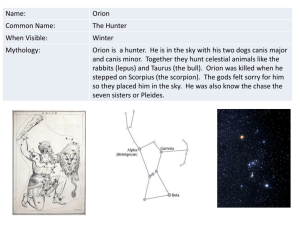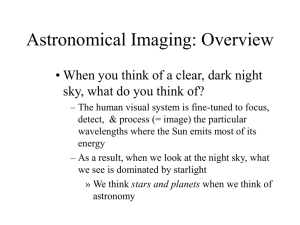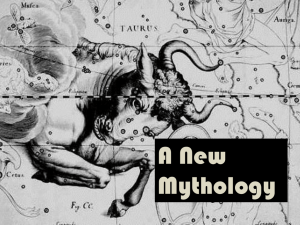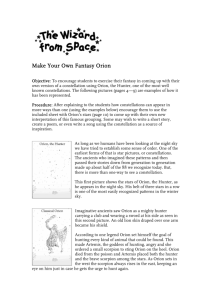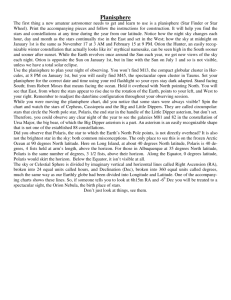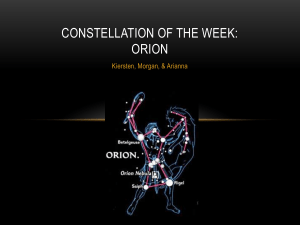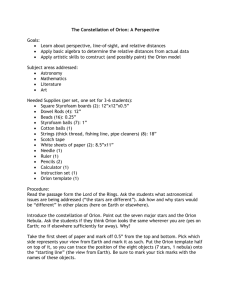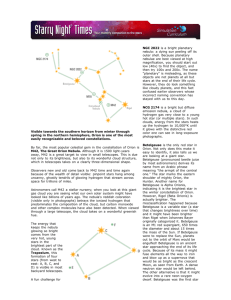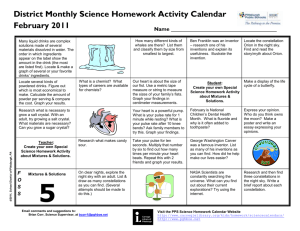Word
advertisement
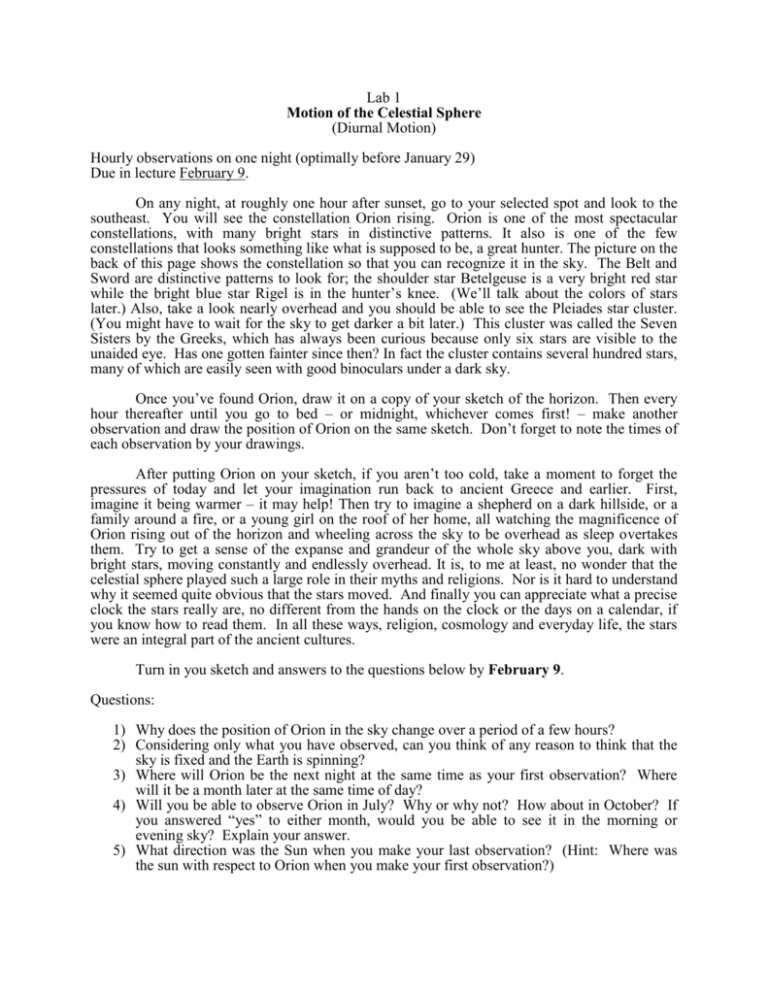
Lab 1 Motion of the Celestial Sphere (Diurnal Motion) Hourly observations on one night (optimally before January 29) Due in lecture February 9. On any night, at roughly one hour after sunset, go to your selected spot and look to the southeast. You will see the constellation Orion rising. Orion is one of the most spectacular constellations, with many bright stars in distinctive patterns. It also is one of the few constellations that looks something like what is supposed to be, a great hunter. The picture on the back of this page shows the constellation so that you can recognize it in the sky. The Belt and Sword are distinctive patterns to look for; the shoulder star Betelgeuse is a very bright red star while the bright blue star Rigel is in the hunter’s knee. (We’ll talk about the colors of stars later.) Also, take a look nearly overhead and you should be able to see the Pleiades star cluster. (You might have to wait for the sky to get darker a bit later.) This cluster was called the Seven Sisters by the Greeks, which has always been curious because only six stars are visible to the unaided eye. Has one gotten fainter since then? In fact the cluster contains several hundred stars, many of which are easily seen with good binoculars under a dark sky. Once you’ve found Orion, draw it on a copy of your sketch of the horizon. Then every hour thereafter until you go to bed – or midnight, whichever comes first! – make another observation and draw the position of Orion on the same sketch. Don’t forget to note the times of each observation by your drawings. After putting Orion on your sketch, if you aren’t too cold, take a moment to forget the pressures of today and let your imagination run back to ancient Greece and earlier. First, imagine it being warmer – it may help! Then try to imagine a shepherd on a dark hillside, or a family around a fire, or a young girl on the roof of her home, all watching the magnificence of Orion rising out of the horizon and wheeling across the sky to be overhead as sleep overtakes them. Try to get a sense of the expanse and grandeur of the whole sky above you, dark with bright stars, moving constantly and endlessly overhead. It is, to me at least, no wonder that the celestial sphere played such a large role in their myths and religions. Nor is it hard to understand why it seemed quite obvious that the stars moved. And finally you can appreciate what a precise clock the stars really are, no different from the hands on the clock or the days on a calendar, if you know how to read them. In all these ways, religion, cosmology and everyday life, the stars were an integral part of the ancient cultures. Turn in you sketch and answers to the questions below by February 9. Questions: 1) Why does the position of Orion in the sky change over a period of a few hours? 2) Considering only what you have observed, can you think of any reason to think that the sky is fixed and the Earth is spinning? 3) Where will Orion be the next night at the same time as your first observation? Where will it be a month later at the same time of day? 4) Will you be able to observe Orion in July? Why or why not? How about in October? If you answered “yes” to either month, would you be able to see it in the morning or evening sky? Explain your answer. 5) What direction was the Sun when you make your last observation? (Hint: Where was the sun with respect to Orion when you make your first observation?) Orion, the Hunter N Betelgeuse E W Belt Sword Rigel S If you have a pair of binoculars, look carefully at the middle “star” in the sword. This fuzzy patch is the Orion nebula, a huge cloud of gas 1200 light years away in which stars are forming at this very moment!
